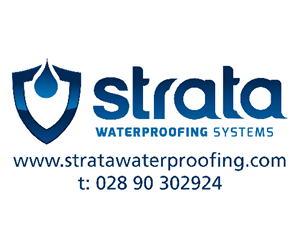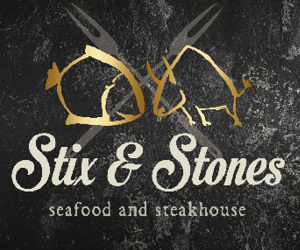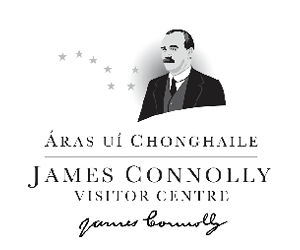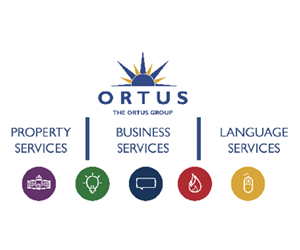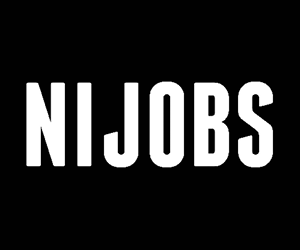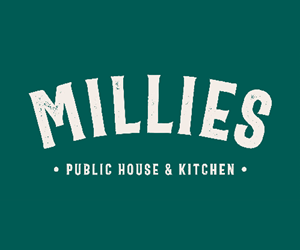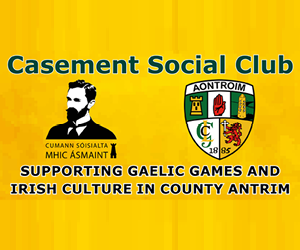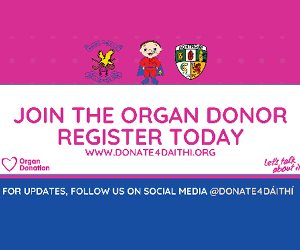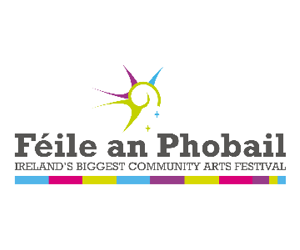Corrigan Park Whiterock Road Belfast – Home of St. John’s since 1953 and Antrim’s first County Ground in 1926
Corrigan Park was named after John Corrigan who had served the Gaelic Athletic Association in a number of roles and had dedicated his life to the furtherance of its ideals. John resided in the Kashmir Road which runs off the Springfield Road in West Belfast. He joined the Brian Og Club in 1901 and down to his organising ability they made rapid progress winning their first Antrim County Hurling Championship in the same year, they won it again in 1909. John became Secretary of the Brian Og club but his talents and dedication got him elected as secretary of the South Antrim Committee. He went on to become Ulster Secretary, Antrim Delegate to Central Council and Congress. During his period of office Antrim Senior Footballers won the Ulster Senior Football Championship on five consecutive years 1909 — 1913.
John died in 1916 and his death was undoubtedly hastened by his arduous work and travel for the Gaelic Athletic Association. To truly appreciate the sacrifice and extent of his work , it is essential to recall the poverty and turmoil in Belfast at that time and the difficulty any form of travel presented to the unfortunate traveller. A great self-sacrificing gael who earned the respect of all Antrim Gaels and deserved the accolade of Corrigan Park being named in his honour. He should not be forgotten.
Before Corrigan Park was acquired, Gaelic games were mainly played in Shaun’s Park known in later years as Mc Rory Park. Two pitches were also laid out just off the Glen Road where Norfolk Drive and parade are now situated. Owing to shortage of playing areas many leagues were left unfinished. Unemployment was rife especially among the nationalist population and there was little money to purchase a ground. Many money raising schemes were tried one of the most successful was one that guaranteed free admission to all games in the new ground, the cost £10.
Up until 1926 the G.A.A. in Belfast could not claim one single playing pitch in Belfast as their own. It was during 1926 that Sean Corrigan’s fellow pioneers had the foresight to purchase the site, now known as Corrigan Park. It happened when the extensive farming property of James O’ Hare came on the market, the largest proportion of the property was bought by the City Council for the building of the present Whiterock estate. The then County Committee negotiated a price of £1600 to purchase the land.
The major drawback was that the Committee had no money and could not convince any of the banks or firms to advance the money. Fortunately a good friend of the Association publican John Cosgrave ,the owner of the public house at the corner of King Street and Castle Street agree to put up the money for the purchase. On the 4th April 1926 ,the deal was completed. John Cosgrove was repaid in the mid-1940’s,perhaps its only now the crucial nature of this generosity was can be appreciated. It’s worth noting that after some years and through the efforts of dedicated officials like John Coburn the debt was repaid. One of the main fund raising activities that contributed to the repayment of the debt was the running of excursion trains to Dublin for the All Ireland football and hurling finals. The grounds committee went on to negotiate a contract price of £560 to enclose the ground , a price which later increased to £600. The fence proved to be very unsatisfactory and blew down in a strong gale. After lengthy negotiations with the contractor and under the threat of legal action the tin fencing was restored.
At last the G.A.A. members of Belfast(South Antrim) had a home of their own. From 1929 onwards Corrigan Park was the Mecca of Belfast Gaels. All the principal South Antrim games were played there , as well as many County games, after the Ulster Council raised it to the status of a County Ground.
The first game of football to be played on the ground was on the 18th July 1926–the South Antrim Championship Final between O Connells and Stephens. The teams on that day were :
O’ Connells: Gillen, Cosgrove, Sadlier, Mulvenna, Nolan, Boomer, Mc Donnell, Mc Dermott, Murray, Hanna, Lismore, Barry, Thornbury, Lewis, Harvey,( Res. J mc Donnell, P Fox).
Stephens: Hughes, Drain, Gibbons, Carbery, Mc Donnell, Murphy, Mc Sherry, Mc Keown, Fox, Mc Allister, Dean, Madden, Donaghy, Rice,
The game ended in a draw. On July 27th 1926 in Corrigan Rossa11 beat Craobh Ruah 6goals to 1 goal.
The ground was officially opened on the 12 September 1926 in a game between Antrim and Louth which ended in a draw seven points each. In 1929 it was agreed to improve the ground to build a stand, to install baths for the players .make an entry from the Whiterock Road, build pavilions and lay a running track. This was in preparation for the Tailteen Games in 1932.The building work cost £500 and in 1929 Messrs. Sunderland & Co. were retained to build the stand to accommodate 900 people at a cost of £1,439.
The stand was built to accommodate spectators no changing facilities were provided under the stand for players and of course no running track was added.
The pavilions at that time which were erected mainly by voluntary labour with Corrugated Iron sheeting on earth flours with wooden Benches as the only additional provision there was no running water and no electricity therefore no showering facilities. There was a two inch gap below the doors where the wind whistled through. The facilities were the only changing facilities available and were the same for County players and club players.
A report in the Irish News of Monday November 23 2009 stated ” John Gafney was the chief worker in the re-erection of Corrigan Park and it was he who directed the planning and building of the pavilions at Whiterock Road”. The article related to the burial of John Gaffney in Milltown Cemetery, John was an outstanding Gael at that time.
The surface of Corrigan was never great to play on particularly to play hurling on however, no ground in Ireland was subjected to such as heavy use summer and winter. During the summer months, matches were played every evening and on Sunday three or four matches were played. Overall an increasing number of games were being played and the expectations of players and officials were rising so, at the Convention of 1944 a Motion was adopted which was to facilitate the reconstruction of Corrigan Park and a committee was formed to plan the reconstruction. A second important decision was made at that convention, that was to elect Seamus Mc Ferran as County Chairman, he went on to become Ulster Council Chairman from 1949 to 1951 and then became Association President from 1955 to 1957. At the first meeting, held in the Ard Scoil in Divis Street, the Corrigan Pak Reconstruction Committee was elected in future it would be known as C.P.R. Seamus remained a member of the C.P.R. committee.
The Committee; Chairman Sean Mc Gettigan, Treasurer John Coburn, Brian Moore, Corny Ennis, Charlie Delaney, Des Mc Quillan, Seamus Mc Ferran, Gus Eastwood, Paddy Burns, Tom Linden Rory Campbell, David Rea, Brendan Kerr, Joe Reid, Paddy Connolly, Jimmy Nolan, Brendan Skeffington, George Hamill, George Branagh, Gerry Smith.
The grounds man of Corrigan Park for many years around this time was the famous father of the Gallagher brothers Joe (Hack) Gallagher who was also always active within the club administration.
On the completion of Casement Park in June 1953 there was significant doubt about the future of Corrigan Park. In 1955 Tommy Hoey of the St John’s committee heard on the grapevine the County Committee had approached Central Council regarding the Sale of Corrigan Park. That Sunday St John’s were playing Ballycastle in Ballycastle, after the winning the game the club held a, what turns out to be a pretty historic meeting in the Antrim Arms in Ballycastle to discuss the possibility of taking control of Corrigan Park. The decision was taken to approach the County Committee for the lease of the ground. The following week at the meeting of County Committee permission was granted. On Sunday 20th November 1955 the club took over the running of Corrigan Park.
Those present at the historic meeting in Ballycastle included Jimmy Feeney, Bob Foley, Tom Hoey and Frank Mc Cann. The following year work began on an eight foot wall which would eventually completely surround the ground. Jack Rooney drew up a Bill Of Quantities and provided guidance on the building of the wall free of charge in 1956. Mick Gribben along with Colm Brennan built the wall with the aid of volunteer labour provided by club members. This was a massive undertaking for the club but it was considered absolutely essential that we secure the ground as a first priority. The cost was just over £4,000 and this was down to the generous amount of time that Mick Gribben and Colm Brennan contributed to the job, plus the willing band of voluntary workers. Fund raising went on throughout to fund the work and the debt was cleared fairly quickly.
Dressing rooms were installed under the stand. These were pretty basic with limited facilities for toilets and washing. In 1968 fire completely gutted these facilities and plans for the reconstruction of Corrigan Park were draw up. In 1970 the first social club was opened by St John’s in Corrigan Park situated on the left hand side of the entrance going towards the Whiterock Road. A Liquor Licence was granted to the premises.(St John’s were the first GAA club to open a Social Club). The social club was the major source of finance which would be used to power the future development plans.
Voluntary labour was massive in facilitating the development work and a hard core of members were always on call. After much research by a number of committee members which included visits to various pitches that had recently been constructed including in particular the Queens pitches built by Prunty Contracts from Fermanagh, Prunty was chosen to lay the new pitch. The construction was based on a method called the Prunty Mulqueen method which had everything to do with pitch drainage and the laying of a sand carpet with the grass roots going through to the soil below.. Particular attention was paid to the drainage system and Eugene Prunty who was in charge of construction on a daily basis insisted in the ground and the stone being dry. This caused some frustration because of delay but paid off in the end . Even when the pitch was ready and the ground opened Prunty insisted on the pitch being closed again through the winter months. This did pay dividends later as the pitch was always playable Prunty maintained the pitch for years after opening. At the same time as the pitch was being laid, water and electric were properly installed in the stand and dressing rooms, toilets, referees room, and showering facilities were provided, the Contractor was Harry McNulty. A tea room for entertaining teams was also provided. The total cost of the entire project was in the region of £55,000.
On Sunday 25th 1974 the reconstructed Corrigan Park was officially opened by the President of the Gaelic Athletic Association Dr. Donald Keenan along with Director General Sean O Siochain and the County Antrim Chairman Jack Rooney. Officials of the club that attended the ceremony were Vice- President Bob Foley, Chairman Andy Mc Callin, Vice- Chairman Michael Gallagher, Secretary Gerry Mc Crory, Assistant Secretary Jim Donnelly, Treasurer Patsy Donnelly, and Assistant Treasurer Gerry Gilroy. Committee members Andy Mc Callin Jnr., Gerry Harte, Joe Mc Cann, Frank Reilly John Gough. Gerry Armstrong Sen. and Hugh Murphy.
The opening game was a Juvenile match between Commedagh and St Michaels Enniskillen both winners of their section of the National Feile Competition.
The main game was the All Ireland U21 Football Championship Semi- final between Antrim and Cork.
In 1979 a Building Fund was established to raise funds to build a new club with the most modern facilities to accommodate the expanding membership and in particular with the youth in mind.
In 1980 the work began with P& F Mc Donald as the main contractor. In 1981 St John’s moved into the first floor of the new club house and social club, disaster struck as funds to pay the contractor run out and he refused to continue with the upper section of the building which was not completed. Organisation of the work to complete the building was too difficult to consider finishing it by using voluntary labour. Fortunately in 1982 one of our own club members, building contractor Michael Gribben who had built the wall around Corrigan Park agreed to head up a team of volunteers with his own work force to complete the building, for the second time the club had to be grateful for the expertise and building experience of Mick Gribben. Most of the work was undertaken at night and at weekends. A great deal of the tools used belonged to the individual members and other necessities were bought in for the job. The work was hard and relentless but the volunteers were willing and the crack was mighty. Without the dedication of the volunteers, the club would not have been finished. Great pride was taken in the work and Mick was a hard taskmaster always insisting that a job worth doing was worth doing well. All agreed afterwards that they got great personal satisfaction from the work. A number of the volunteers appeared periodically but the following can rightly make claim to belong to ‘Big Mick’s Fusiliers; Malachy Gribben (not only gave of his time but also supplied the paint for all the painting work), Pat and John Catney, Colm Brennan, Joe Herald, Michael Ireland, Gerard Mc Fall. Pat Mc Caffrey, Danny Maguinness, John Mc Quillan, Pierce Mc Fall, Christopher Mc Cullough, Pat Prior, Pat Mc Varnick, Pat Kennedy, What had looked like a disaster had been turned into a fantastic success story with all who took part which includes the hard working Committee members. The true spirit of St John’s had carried the day when all looked lost. The ” Johnnies had overcome
with a never say die attitude and a determination not to be beaten.
Another chapter in the linked history of Corrigan Park and St John’s had been written.
.
Many famous games were played in Corrigan Park such as in 1943
Aontruim V Gaillimh admission 3p
Aontruim V Cill Coinnig admission 3p.
The Cork Senior Hurling team defeated Antrim due to a magnificent display by Christy Ring probably the greatest hurler ever in Corrigan park.
Other top county teams to grace Corrigan Park included Dublin, Kerry, and Tipperary.
Corrigan Park was the Counties first County Ground and all Inter County games were played their until the opening of Casement Park in 1953.
From the early sixties the Annual Outdoor Week with carnival attracted the crowds to Corrigan. From 1963 the famous ‘Top Four’ competitions thrilled the large crowds that packed Corrigan Park. Great game were witnessed with the cream of Ulster clubs such as Bellaghy(Derry), Glenn(Down), St Joseph’s (Donegall), Bryansford (Down), Clan-na Gael (Armagh) and Scotstown
( Monaghan). This developed into the unofficial Ulster Club Championship run by St John’s and sponsored by Arthur Guinness this proved to be a massive success, with the Northern section being organised and run off by the St Molaise Devenish from Devenish in Fermanagh. All the Ulster Club Champions took part,
it was hard work but it was also profitable for St John’s. In 1965 the first Inter- Provincial game took place in Corrigan Park between St John’s and Dunmore Mc Hales(Galway) in a fantastic game St John’s came out winners. The Galway side was laid by the famous Jack Mahon.


